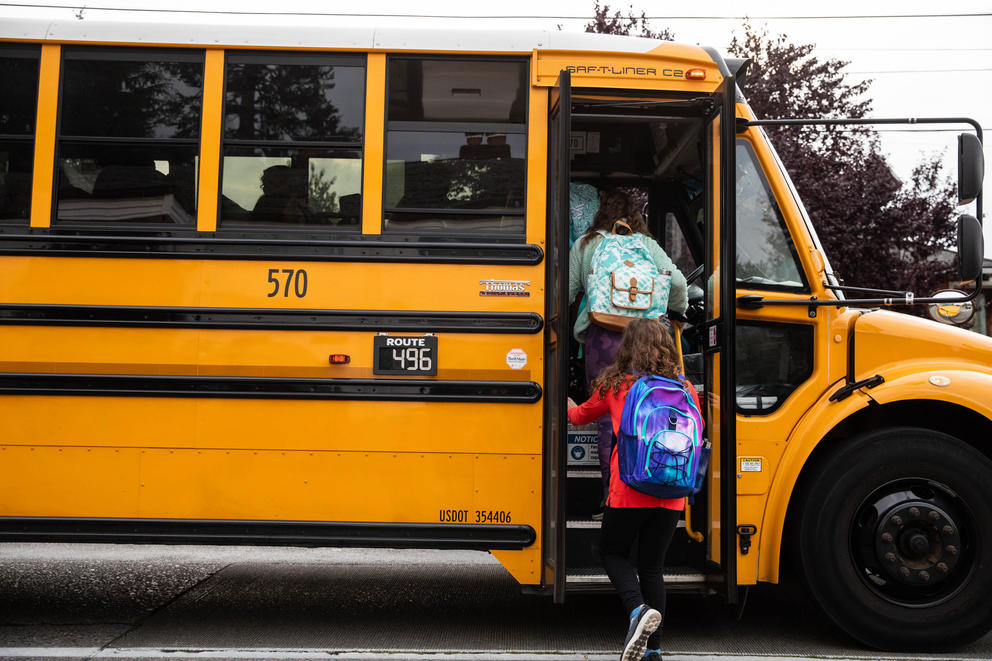More students experiencing homelessness in Washington

Students board the bus to Hamilton International Middle School on the first day of school on Wednesday, Sept. 14, 2022. (Amanda Snyder/Cascade PBS)
The number of students experiencing homelessness in Washington has grown by about 15% compared to the school year when the pandemic began, according to new data from the Office of the Superintendent of Public Instruction.
OSPI reports 42,436 students were homeless or had insecure housing during the 2022-23 school year compared to 36,996 during the 2019-2020 school year, while the total population of students enrolled in public school decreased during that time.
The every-other-year report to the Legislature explains that the number of homeless students reported in the past few school years may have decreased during the pandemic because school districts had difficulty identifying and serving those students.
The report breaks down the homeless student population by ethnicity, and notes that while 3.8% of all public school students statewide have experienced homelessness, the percentages are greater among Native Hawaii and Pacific Islander students (11.8%), Black or African American students (7.4%), Native American or Alaskan Native students (7.2%) and Hispanic or Latino students (5.4%).
The federal definition for students who are entitled to special services related to homelessness is different from the generally accepted definition of what it means to be unhoused. This report follows this broader definition and offers some detail about the students’ living situations.
About 76% of homeless students are “doubled-up” or sharing the housing of other people due to the loss of their housing, economic hardship or a similar reason. Another 6.4% are living in hotels or motels, 10.9% live in temporary shelters and 6.7% are unsheltered or living in a car, campground, abandoned building or substandard housing.
OSPI also reports that more students experiencing homelessness fail to graduate than the general student population, more are reported as truant and have poorer attendance overall and more were suspended or expelled from school.
